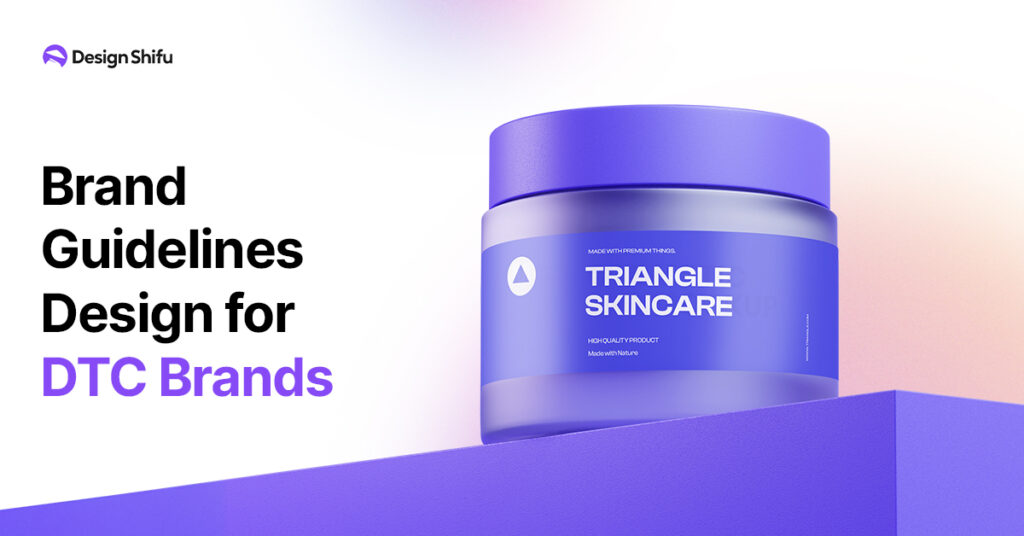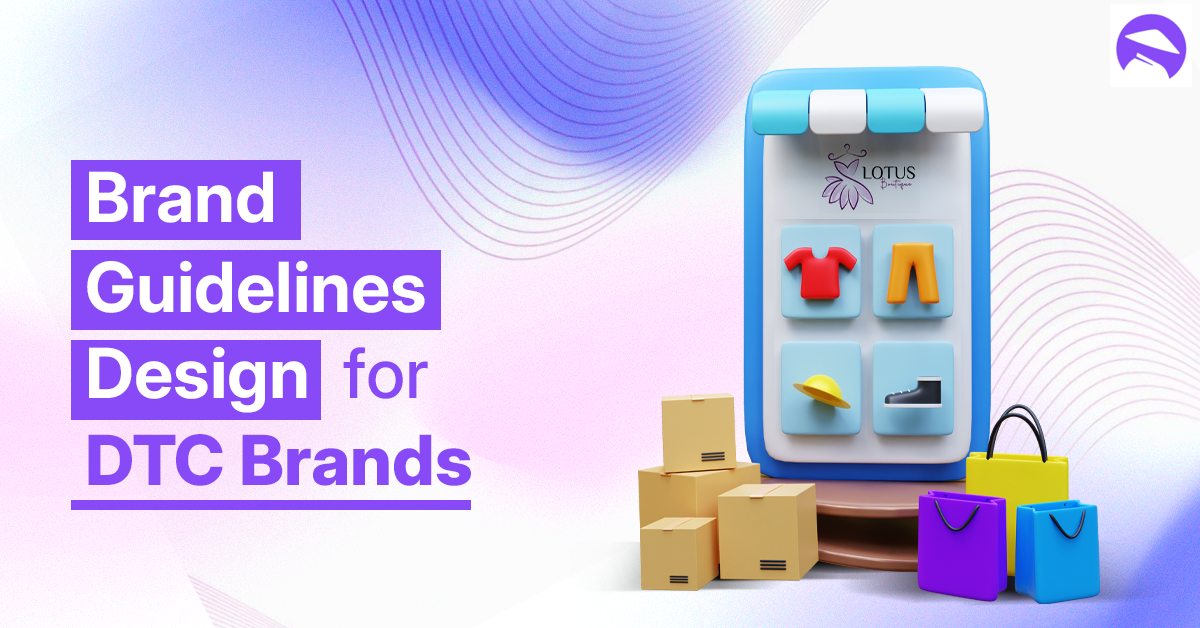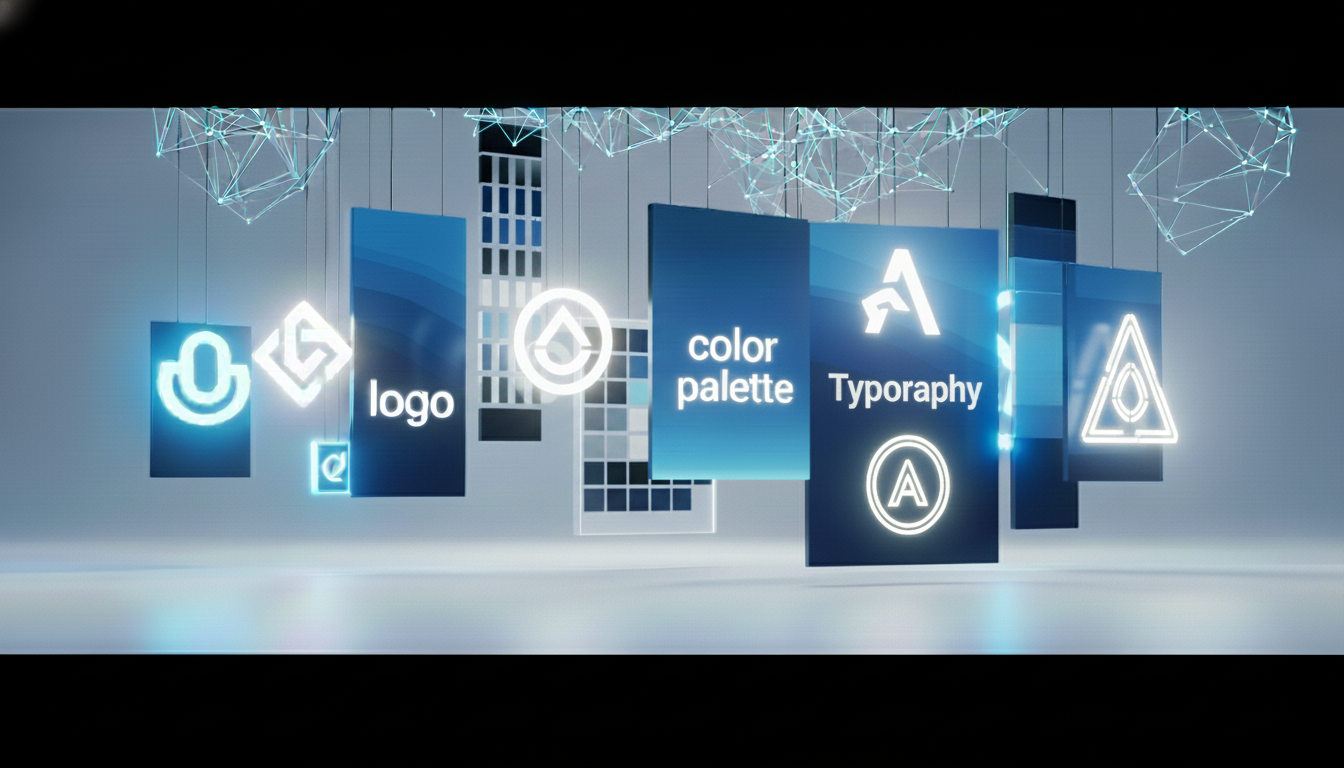In the ever-competitive world of direct-to-consumer (DTC) brands, your product isn’t the only thing customers remember your brand identity is equally important.
Whether you sell skincare, subscription boxes, or ethically sourced fashion, what keeps your audience coming back is consistency. That’s where brand guidelines come in.
If you’re building a DTC brand or scaling one, this guide will walk you through how to create powerful brand guidelines that fuel recognition, trust, and conversion at every touchpoint.
TL;DR: Why Brand Guidelines Matter for DTC Brands
- DTC brands rely on visual and tonal consistency across packaging, ads, social, email, and web.
- Brand guidelines ensure your team, partners, and creatives follow the same rules.
- A comprehensive guide includes logo usage, color palettes, tone of voice, packaging design rules, and more.
- Cohesive branding can increase customer trust, reduce design errors, and improve ROI on marketing efforts.
Why DTC Brands Need Brand Guidelines
Unlike traditional retail brands, DTC companies own every step of the customer journey from Instagram ads to post-purchase emails to the unboxing experience. This makes visual consistency absolutely critical across touchpoints, including landing pages.
Without clear brand guidelines
- Your paid ads may look different from your product packaging.
- Freelancers might interpret your brand tone incorrectly.
- Social posts may stray from your visual identity, confusing potential buyers.
Inconsistent branding = missed conversions.
What Should Be Included in DTC Brand Guidelines?
1. Brand Story and Mission
Start with your “why.” Your brand’s backstory, core values, and mission help guide your voice and visual decisions.
Pro tip: Include your target audience personas here, this keeps all creative decisions user-centered.
2. Logo Usage Rules
Show the primary and secondary versions of your logo, minimum size requirements, placement rules, and unacceptable usages (e.g., no stretching or color inversions).
This Include
- Main logo
- Icon or favicon
- Logo spacing and padding
- Black & white versions
3. Color Palette
DTC brands often use bold or distinctive colors to pop in ads or on packaging.
Define your
- Primary and secondary brand colors (with hex, CMYK, and Pantone codes)
- Backgrounds and accent color use
- Examples of good color combos and contrasts
4. Typography
Consistency in typography helps tie together your website, emails, packaging, and ads.
- Primary and secondary fonts
- Font hierarchy (H1, H2, paragraph text)
- Usage across digital and print
5. Tone of Voice
Whether you’re playful like Glossier or premium like Allbirds, your brand tone should feel familiar everywhere.
- Core tone descriptors (e.g., confident, witty, warm)
- Do’s and don’ts
- Sample phrases and taglines
- Email, SMS, and social tone examples
6. Imagery Guidelines
DTC brands thrive on storytelling through visuals. Explain what kind of imagery aligns with your brand.
- Product photography style (minimalist, lifestyle, high-contrast, etc.)
- Image composition rules
- Moodboard or inspiration examples
- What to avoid
7. Packaging & Unboxing Style
In DTC, unboxing is marketing.

- Packaging templates
- Sticker and insert designs
- Material and color preferences
- Tone and copy for product inserts
8. Social Media Guidelines
Create platform-specific guidelines for Instagram, TikTok, Facebook, and other relevant channels. Include templates for different post types, story formats, and profile optimization.
Document your approach to hashtags, captions, and community engagement.
- Template usage (Reels covers, stories, carousels)
- Brand elements (stickers, GIFs, hashtags)
- Photography filters or presets
- Content tone and frequency
9. Ad Creative Guidelines
Performance ads should feel native but still on-brand. Outline:
- Ad copy tone
- CTA formats
- Font size minimums
- Brand do’s and don’ts in UGC
10. Iconography and Graphics
Develop a consistent approach to icons, illustrations, and graphic elements that support your brand identity. These elements should feel cohesive with your overall visual system while serving functional purposes across your digital ecosystem.
11. Digital-First Applications
DTC brands exist primarily in digital spaces, so your guidelines must provide specific direction for digital applications that traditional brand guidelines often overlook.
12. Website Design Standards
Establish templates and standards for your website including header and footer treatments, button styles, form designs, and page layouts. Document how your brand elements should be applied across different page types and user experiences.
13. Email Marketing Standards
Establish templates and guidelines for different email types including welcome sequences, promotional emails, transactional messages, and newsletters. Include specifications for header treatments, button styles, and signature formatting.
14. Advertising Creative Standards
Establish guidelines for paid advertising creative including ad formats, messaging approaches, and visual treatments that maintain brand consistency while optimizing for performance.
Tools to Help Build DTC Brand Guidelines
You don’t need fancy tools to get started, these platforms make it easier:
- Canva Pro – Use brand kits and templates for social and email
- Figma – Collaborative style guides for internal teams
- Notion – Document everything in a central, sharable hub
- Frontify or Corebook – Great for scalable, interactive brand manuals
Common Mistakes DTC Brands Make with Brand Guidelines
Many DTC brands make predictable mistakes when developing brand guidelines that can undermine their effectiveness.
- Too vague: Saying “use modern fonts” isn’t helpful. Be specific.
- Not updated: Rebranding or launching new products? Refresh the guidelines.
- Not shared: Keep it accessible to internal teams, freelancers, and vendors.
- Over-Complication: Guidelines that are too complex or rigid often get ignored. Focus on clarity and practical application rather than exhaustive documentation.
- Under-Specification: Vague guidelines leave too much room for interpretation and lead to inconsistent applications. Be specific about measurements, colors, and applications.
- Digital Neglect: Traditional brand guidelines often focus on print applications while neglecting digital-specific needs. Ensure your guidelines adequately address social media, email, and web applications.
- Static Thinking: Brand guidelines should evolve with your brand and market conditions. Build in regular review and update processes rather than treating guidelines as permanent documents.
How to Roll Out Your Brand Guidelines
- Host a kickoff session for your team or stakeholders.
- Include the guide in your onboarding process.
- Pin it in Slack, Notion, or your internal drive.
- Provide a short “cheat sheet” for quick reference.
The ROI of Strong Brand Guidelines
Investing in comprehensive brand guidelines delivers measurable returns for DTC brands through improved marketing efficiency, stronger customer relationships, and premium pricing power.
Well-executed brand guidelines reduce creative development time, improve marketing campaign performance, and create the consistency that builds customer trust and loyalty.
In the competitive DTC landscape, brands that nail their identity and apply it consistently across all touchpoints will continue to outperform those that treat branding as an afterthought.
Your brand guidelines aren’t just a document they’re the foundation of your customer relationships and the blueprint for sustainable growth in the direct-to-consumer economy. Invest the time to get them right, and they’ll pay dividends across every aspect of your business.
Final Thoughts: Brand Guidelines Are a DTC Brand’s Best Friend
Whether you’re selling protein bars or pet products, brand guidelines ensure your identity stays clear, cohesive, and competitive. In a saturated DTC market, how your brand looks, sounds, and behaves makes all the difference.
So don’t treat it as a “nice-to-have.” Make it your brand bible and watch your design, marketing, and CX teams move faster and smarter.
Ready to elevate your DTC brand with consistent, standout visuals? Don’t let inconsistent branding cost you conversions. At Design Shifu, we help fast-growing DTC brands like yours bring their identity to life across packaging, ads, emails, and beyond with on-demand, unlimited graphic design support that fits your workflow
FAQ’s
1. What are brand guidelines for DTC brands?
Brand guidelines for DTC brands are a set of visual and verbal standards that ensure brand consistency across all customer touchpoints like packaging, social media, ads, and website content.
2. Why do DTC brands need brand guidelines?
3. What should be included in a DTC brand style guide?
4. How do I make sure my whole team follows brand guidelines?
5. Can I update brand guidelines later?





